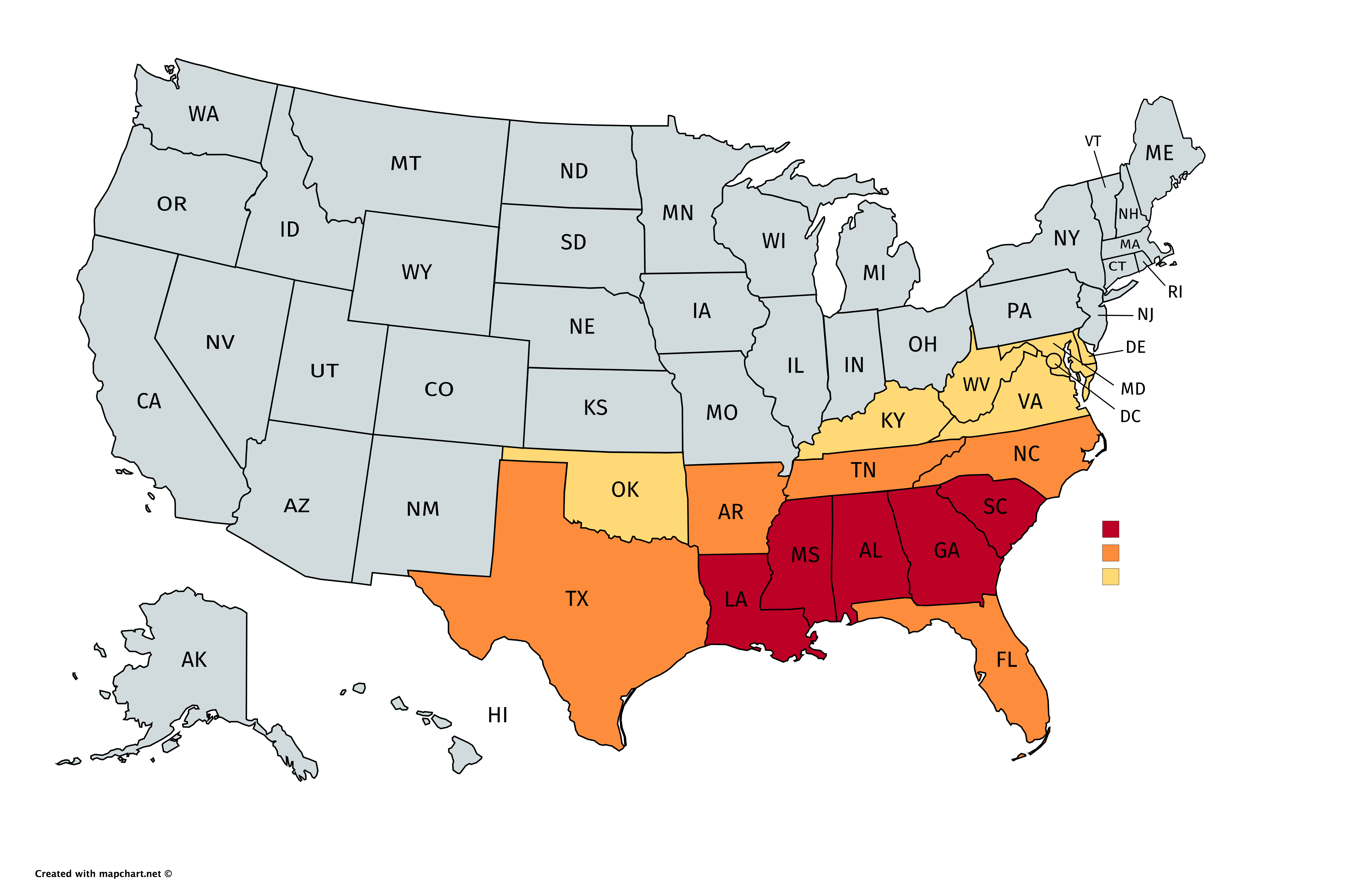|
Dawson Five
The Dawson Five were defendants in a criminal court case in Dawson, Georgia, where they were charged with the murder of a white customer in a roadside convenience store. The five young black men, one of whom was a juvenile, became known as "The Dawson Five": Roosevelt Watson, Henderson Watson, J. D. Davenport, Johnnie B. Jackson, and George Poor. On January 22, 1976, Gordon B. Howell Jr. was shot during a robbery of Tiny's Grocery, located at Bridges Crossroads near Dawson. On December 19, 1977, after over a year of imprisonment, time in the national spotlight, and contentious pretrial hearings; District Attorney John Irwin announced that he was dropping all charges against the five defendants, after a ruling by the presiding Judge Geer that voided Roosevelt Watson's forced confession. The court dropped the charges after finding evidence of police misconduct, including coerced confessions, intimidation, and improper identification procedures. Murder of Gordon B. Howell Jr. ... [...More Info...] [...Related Items...] OR: [Wikipedia] [Google] [Baidu] |
Terrell County, Georgia
Terrell County is a county located in the southwestern portion of the U.S. state of Georgia. As of the 2020 census, the population was 9,185. The county seat is Dawson. Terrell County is included in the Albany, GA Metropolitan Statistical Area. History Formed from portions of Randolph and Lee Counties on February 16, 1856, by an act of the Georgia General Assembly, Terrell County is named for Dr. William Terrell (1778–1855) of Sparta, Georgia, who served in the Georgia General Assembly and the United States House of Representatives. During the American Civil War, after Atlanta's capture by Union forces, a refugee settlement was established in Terrell County for civilians forced to flee the city. The ''Fosterville'' settlement, named after Georgia Quartermaster General Ira Roe Foster, was according to author Mary Elizabeth Massey in her 2001 history, the "most ambitious refugee project approved by the Georgia General Assembly" uring that period On March 11, 1865, the ... [...More Info...] [...Related Items...] OR: [Wikipedia] [Google] [Baidu] |
False Confession
A false confession is an admission of guilt for a crime which the individual did not commit. Although such confessions seem counterintuitive, they can be made voluntarily, perhaps to protect a third party, or induced through coercive interrogation techniques. When some degree of coercion is involved, studies have found that subjects with highly sophisticated intelligence or manipulated by their so called "friends" are more likely to make such confessions. Young people are particularly vulnerable to confessing, especially when stressed, tired, or traumatized, and have a significantly higher rate of false confessions than adults. Hundreds of innocent people have been convicted, imprisoned, and sometimes sentenced to death after confessing to crimes they did not commit—but years later, have been exonerated. It was not until several shocking false confession cases were publicized in the late 1980s, combined with the introduction of DNA evidence, that the extent of wrongful convicti ... [...More Info...] [...Related Items...] OR: [Wikipedia] [Google] [Baidu] |
Peabody Awards
The George Foster Peabody Awards (or simply Peabody Awards or the Peabodys) program, named for the American businessman and philanthropist George Peabody, honor the most powerful, enlightening, and invigorating stories in television, radio, and online media. The awards were conceived by the National Association of Broadcasters in 1938 as the radio industry’s equivalent of the Pulitzer Prizes. Programs are recognized in seven categories: news, entertainment, documentaries, children's programming, education, interactive programming, and public service. Peabody Award winners include radio and television stations, networks, online media, producing organizations, and individuals from around the world. Established in 1940 by a committee of the National Association of Broadcasters, the Peabody Award was created to honor excellence in radio broadcasting. It is the oldest major electronic media award in the United States. Final Peabody Award winners are selected unanimously by the prog ... [...More Info...] [...Related Items...] OR: [Wikipedia] [Google] [Baidu] |
Terrell Academy
Terrell Academy is a private K3-12 school in Dawson, Georgia, seat of Terrell County. It serves 380 students. The school has a controversial history as a segregation academy. History Terrel was founded in 1970 as a segregation academy. In the summer of 1970, a senior told the ''Atlanta Constitution'' she enrolled in Terrel Academy so she "didn't have to spend the rest of her life sitting next to a nigger." In 1973, headmaster Thomas Church told the ''Atlanta Constitution'' that racial situation in Terrell County School District boosted the private school’s enrollment. In 1977, Terrell Academy director W.C. Woodall acknowledged that the school was founded in response to a court order mandating the integration public school faculty. Woodall stated that although he personally supported racial segregation, black students would be welcome at Terrell. The school was however granted tax-exempt status in 1970. Alumni * Harry Spilman, baseball player *Cole Swindell Colden Rai ... [...More Info...] [...Related Items...] OR: [Wikipedia] [Google] [Baidu] |
Public Broadcasting Service
The Public Broadcasting Service (PBS) is an American public broadcaster and non-commercial, free-to-air television network based in Arlington, Virginia. PBS is a publicly funded nonprofit organization and the most prominent provider of educational programming to public television stations in the United States, distributing shows such as ''Frontline'', '' Nova'', ''PBS NewsHour'', ''Sesame Street'', and ''This Old House''. PBS is funded by a combination of member station dues, the Corporation for Public Broadcasting, pledge drives, and donations from both private foundations and individual citizens. All proposed funding for programming is subject to a set of standards to ensure the program is free of influence from the funding source. PBS has over 350 member television stations, many owned by educational institutions, nonprofit groups both independent or affiliated with one particular local public school district or collegiate educational institution, or entities owned by or r ... [...More Info...] [...Related Items...] OR: [Wikipedia] [Google] [Baidu] |
The New York Times
''The New York Times'' (''the Times'', ''NYT'', or the Gray Lady) is a daily newspaper based in New York City with a worldwide readership reported in 2020 to comprise a declining 840,000 paid print subscribers, and a growing 6 million paid digital subscribers. It also is a producer of popular podcasts such as '' The Daily''. Founded in 1851 by Henry Jarvis Raymond and George Jones, it was initially published by Raymond, Jones & Company. The ''Times'' has won 132 Pulitzer Prizes, the most of any newspaper, and has long been regarded as a national " newspaper of record". For print it is ranked 18th in the world by circulation and 3rd in the U.S. The paper is owned by the New York Times Company, which is publicly traded. It has been governed by the Sulzberger family since 1896, through a dual-class share structure after its shares became publicly traded. A. G. Sulzberger, the paper's publisher and the company's chairman, is the fifth generation of the family to head the pa ... [...More Info...] [...Related Items...] OR: [Wikipedia] [Google] [Baidu] |
Reconstruction Era
The Reconstruction era was a period in American history following the American Civil War (1861–1865) and lasting until approximately the Compromise of 1877. During Reconstruction, attempts were made to rebuild the country after the bloody Civil War, bring the former Confederate states back into the United States, and to redress the political, social, and economic legacies of slavery. During the era, Congress abolished slavery, ended the remnants of Confederate secession in the South, and passed the 13th, 14th, and 15th Amendments to the Constitution (the Reconstruction Amendments) ostensibly guaranteeing the newly freed slaves (freedmen) the same civil rights as those of whites. Following a year of violent attacks against Blacks in the South, in 1866 Congress federalized the protection of civil rights, and placed formerly secessionist states under the control of the U.S. military, requiring ex-Confederate states to adopt guarantees for the civil rights of free ... [...More Info...] [...Related Items...] OR: [Wikipedia] [Google] [Baidu] |
Lynching In The United States
Lynching was the widespread occurrence of extrajudicial killings which began in the United States' pre–Civil War South in the 1830s and ended during the civil rights movement in the 1950s and 1960s. Although the victims of lynchings were members of various ethnicities, after roughly 4 million enslaved African Americans were emancipated, they became the primary targets of white Southerners. Lynchings in the U.S. reached their height from the 1890s to the 1920s, and they primarily victimised ethnic minorities. Most of the lynchings occurred in the American South because the majority of African Americans lived there, but racially motivated lynchings also occurred in the Midwest and border states. Lynchings followed African Americans with the Great Migration () out of the American South, and were often perpetrated to enforce white supremacy and intimidate ethnic minorities along with other acts of racial terrorism. A significant number of lynching victims were accused ... [...More Info...] [...Related Items...] OR: [Wikipedia] [Google] [Baidu] |
Racial Inequality In The United States
Racial inequality in the United States identifies the social inequality and advantages and disparities that affect different races within the United States. These can also be seen as a result of historic oppression, inequality of inheritance, or racism and prejudice, especially against minority groups. There are vast differences in wealth across racial groups in the United States. The wealth gap between Caucasian and African-American families nearly tripled from $85,000 in 1984 to $236,500 in 2009. There are many causes, including years of home ownership, household income, unemployment, education, and inheritance. Under slavery in the United States, African Americans were treated as property. After the American Civil War, Black sharecroppers became trapped in debt. African Americans were rarely able to homestead. The Freedman's Bank failed, losing many Black assets. Exclusions from Social Security disproportionately affected African Americans. Savings were spent for retirement ... [...More Info...] [...Related Items...] OR: [Wikipedia] [Google] [Baidu] |
Civil Rights Movement
The civil rights movement was a nonviolent social and political movement and campaign from 1954 to 1968 in the United States to abolish legalized institutional Racial segregation in the United States, racial segregation, Racial discrimination in the United States, discrimination, and disenfranchisement in the United States, disenfranchisement throughout the United States. The movement had its origins in the Reconstruction era during the late 19th century, although it made its largest legislative gains in the 1960s after years of direct actions and grassroots protests. The social movement's major nonviolent resistance and civil disobedience campaigns eventually secured new protections in federal law for the civil rights of all Americans. After the American Civil War and the subsequent Abolitionism in the United States, abolition of slavery in the 1860s, the Reconstruction Amendments to the United States Constitution granted emancipation and constitutional rights of citizenship ... [...More Info...] [...Related Items...] OR: [Wikipedia] [Google] [Baidu] |
United States Civil War
The American Civil War (April 12, 1861 – May 26, 1865; also known by other names) was a civil war in the United States. It was fought between the Union ("the North") and the Confederacy ("the South"), the latter formed by states that had seceded. The central cause of the war was the dispute over whether slavery would be permitted to expand into the western territories, leading to more slave states, or be prevented from doing so, which was widely believed would place slavery on a course of ultimate extinction. Decades of political controversy over slavery were brought to a head by the victory in the 1860 U.S. presidential election of Abraham Lincoln, who opposed slavery's expansion into the west. An initial seven southern slave states responded to Lincoln's victory by seceding from the United States and, in 1861, forming the Confederacy. The Confederacy seized U.S. forts and other federal assets within their borders. Led by Confederate President Jefferson Davi ... [...More Info...] [...Related Items...] OR: [Wikipedia] [Google] [Baidu] |
Deep South
The Deep South or the Lower South is a cultural and geographic subregion in the Southern United States. The term was first used to describe the states most dependent on plantations and slavery prior to the American Civil War. Following the war, the region suffered economic hardship and was a major site of racial tension during and after the Reconstruction era. Before 1945, the Deep South was often referred to as the "Cotton States" since cotton was the primary cash crop for economic production. The civil rights movement in the 1950s and 1960s helped usher in a new era, sometimes referred to as the New South. Usage The term "Deep South" is defined in a variety of ways: *Most definitions include the following states: Louisiana, Mississippi, Alabama, Georgia, and South Carolina. *Texas, and Florida are sometimes included,Neal R. Pierce, ''The Deep South States of America: People, Politics, and Power in the Seven States of the Deep South'' (1974), pp 123–61 due to being peri ... [...More Info...] [...Related Items...] OR: [Wikipedia] [Google] [Baidu] |



.png)



